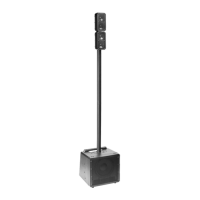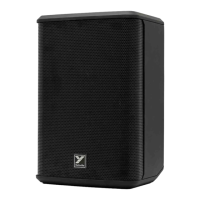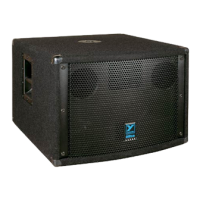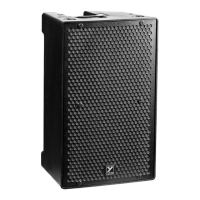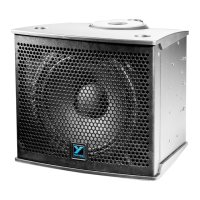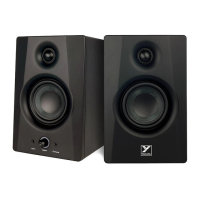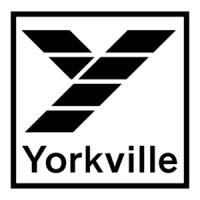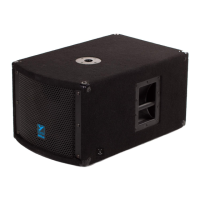Do you have a question about the YORKVILLE ELITE EF500P and is the answer not in the manual?
Caution against opening the unit to avoid electric shock; servicing by qualified personnel only.
Covers reading manual, packaging, power sources, hazards, power cord, and service.
Explains Class D and Class H amplification for efficiency, reduced heat, and performance.
Details the built-in mixer, mic/line inputs, and loop output for daisy-chaining.
Lists cabinet, power, drivers, inputs/outputs, EQ, flying hardware, and grille.
Details operation of Mic Input, Line/CD Inputs, and the Link function.
Explains Level Control, LF Rolloff switch, and their audio signal effects.
Describes Mixer On/Off, Mic/Line/CD level, and Treble/Bass controls.
Explains PWR, Limit, Clip LEDs, and the main power switch.
Notes on connecting unbalanced sources to balanced inputs for best hum rejection.
Details system type, power, driver configs, impedance, and dispersion.
Lists amp types, power, input sensitivity, impedance, and connectors.
Covers enclosure materials, grille, dimensions, weight, and hardware.
Diagram illustrating linking multiple EF500Ps for a single microphone source.
Diagram showing EF500Ps connected to an external mixer for stereo output.
Shows connecting multiple EF500Ps to an external mixer for stereo sound.
Illustrates connecting a microphone and a CD player to a single EF500P.
Diagram for connecting two microphones and one CD player to EF500Ps.
Illustrates connecting EF500Ps with mic, CD player, and powered subwoofers.
Block diagram illustrating the audio signal path within the EF500P.
Notes on link connection function and external mixer connection.
Overview of flying hardware and crucial safety warnings for overhead rigging.
Steps for installing eyebolts, required tools, and load rating notes.
Details specified working load limits for enclosure and track railings.
Details transferable warranty, coverage, exclusions, and terms for Canada/USA.
Provides contact details for Yorkville Sound in Canada and the USA.

